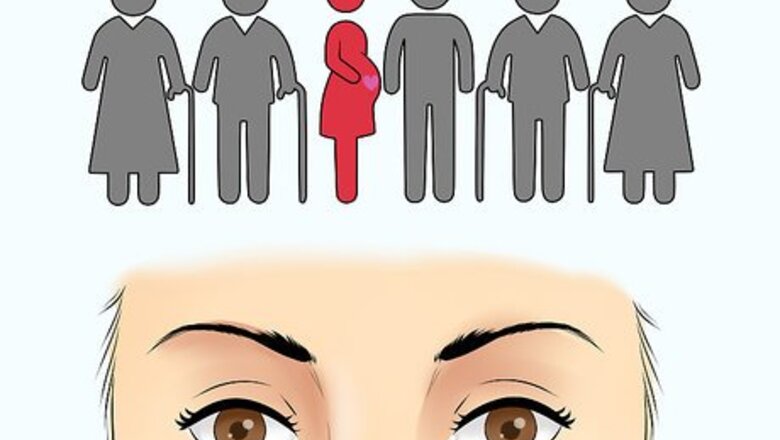
views
Collecting Family Eye Colors

Observe the color of the mother’s eyes. Babies inherit genes from both the mother’s side and the father’s side to determine eye color. This means that the mother’s eye color will have a direct influence on the baby’s eye color, though they may not be the same. The first step to a good prediction is to note the eye color of the mother as one of the following: Brown Blue Green Hazel
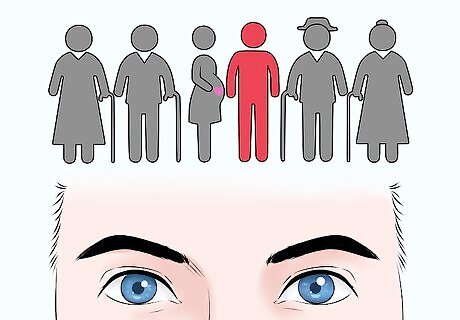
Factor in the father’s eye color. Since only 50% of the genes determining eye color come from the mother, the father’s eye color should also be noted. Again, the baby’s eye color could be different from either or both parents, but knowing the parents’ eye colors gives you a starting point. Label the dad’s eye color as brown, blue, green or hazel.
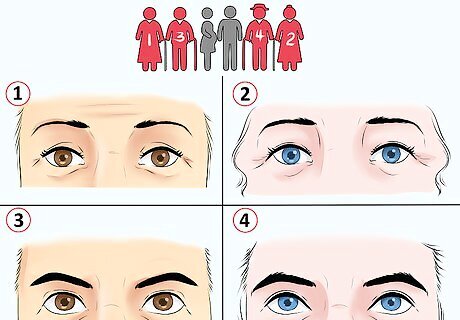
Know the eye colors of all 4 grandparents. This is most helpful when the two grandparents from either side have different colored eyes. By comparing their eye colors, you can learn more about the genes that their children (including one of the baby’s parents) carry.
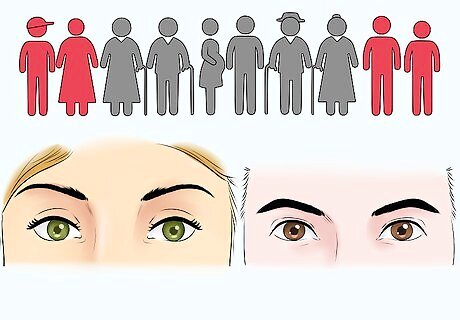
Look at the eye color of both parents’ siblings. Parents’ siblings can also shed light on the variety of genes in the family. When siblings have different eye colors, it can indicate that the parents carry two different genes for eye color (heterozygous) instead of two copies of the same gene (homozygous). This information can help determine whether the baby’s parents are heterozygous or homozygous, and increase the accuracy of your prediction.
Considering Other Factors

Learn the difference between heterozygous and homozygous. If a parent is homozygous for the genes determining eye color, that means that they have 2 copies of the same allele. If a parent is heterozygous for eye color, then they have 2 different alleles for that gene. The most dominant allele is the one that will be expressed (the eye color you will see, or the phenotype). An allele is a variant form of a gene and alleles are found on the same place on a chromosome.
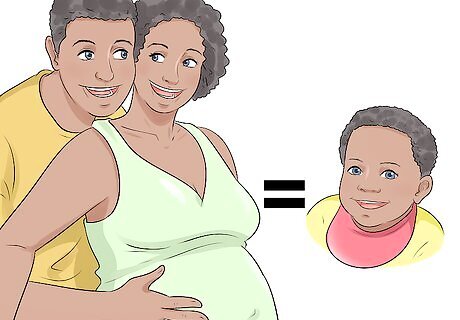
Consider any additional information gained. The goal of analyzing additional family members is to attempt to discern whether parents are homozygous or heterozygous. If a parent is homozygous, there is a 100% chance that they will pass the gene for their eye color to the child. However, that drops to 50% for a particular gene if the parent is heterozygous. For example, blue eyes indicate a homozygous parent because the gene that expresses blue eye color is a recessive gene. Brown eyes can be homozygous or heterozygous because the gene that expresses brown eye color is a dominant gene.

Keep in mind that eye color is polygenic. Polygenic traits are traits that rely on more than 1 gene for expression. This means that several genes influence eye color, making predictions based on the parents’ eye color even less certain. With that in mind, it is still a good starting point for an educated prediction. For example, if both parents have blue eyes, they will both pass a gene for blue eyes to the child. This means that in the vast majority of cases, that child will have blue eyes. However, in rare cases, other genes change the color of the eye from blue to brown, hazel, or green.
Calculating Eye Color Probabilities
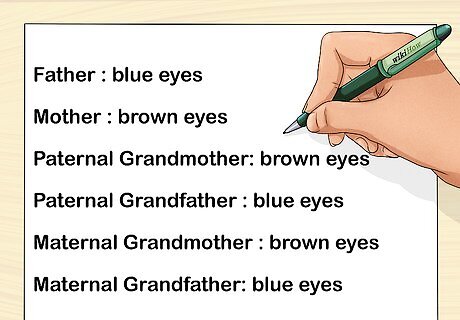
List all known genes for eye color. Once you have analyzed all of the family members that you plan to include, make a list of their eye colors. This list will need to be analyzed either by hand or using computer software to determine possible eye colors for the baby. If you have no experience with inherited genes, you should use a computer program or consult someone that has knowledge of how genes are passed down. For example: Father: blue eyes Mother: brown eyes Paternal Grandmother: brown eyes Paternal Grandfather: blue eyes Maternal Grandmother: brown eyes Maternal Grandfather: blue eyes
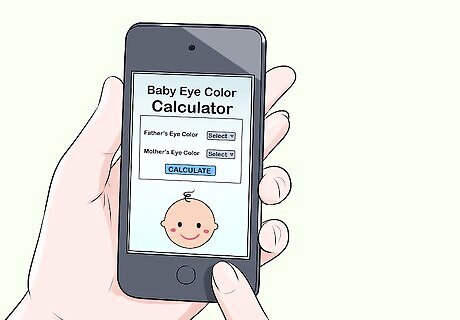
Use an online calculator. Online calculators do most of the biology and math for you. Enter the eye color of each relative (e.g., parents, grandparents, aunts, uncles) in the indicated fields. When you are finished, the program will analyze the data and tell you the likelihood of each eye color.
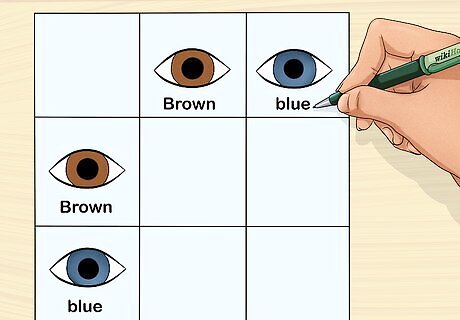
Draw a Punnett square. A Punnett square can be made for eye color by drawing a chart with 2 columns and 2 rows. On top of the columns, list the father’s alleles (genotype) for eye color. Along the left side of the rows, list the mother’s alleles for eye color. If you can determine the 2 genes that each parent has (this is easiest if both parents are homozygous), you can make a Punnett square. This square will tell you the possible gene combinations for your baby, which will indicate the possible eye colors. The Punnett square will also show the probability of each color.

Fill in the Punnett Square. There should be 4 blank spaces under the father’s alleles and to the right of the mother’s alleles. In each space, write the father’s allele from the above it and the mother’s allele from the left of it. These 4 gene combinations are the possible combinations of your baby.
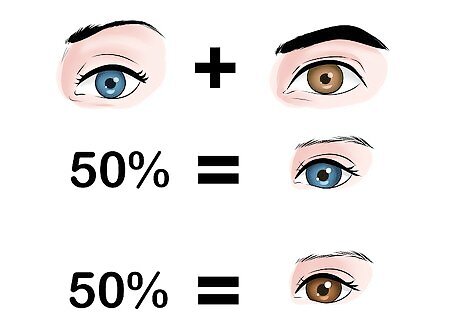
Determine the probability of different eye colors. The 4 boxes represent possible combinations of alleles. Each box represents a 25% chance that your baby will have that combination of alleles, and thus the eye color that it represents. If a certain combination does not appear in any box, there is no chance of having that combination. If a combination appears more than once, the chance of the baby carrying those alleles is greater. In the example above, it is clear that the father is homozygous (because blue eyes are recessive) and that the mother is heterozygous (because her father had blue eyes and could only have passed that gene). This allows you to make a Punnett square with 4 boxes. The likelihood of the baby having brown eyes will be 50% and the likelihood that it has blue eyes will be 50%.




















Comments
0 comment